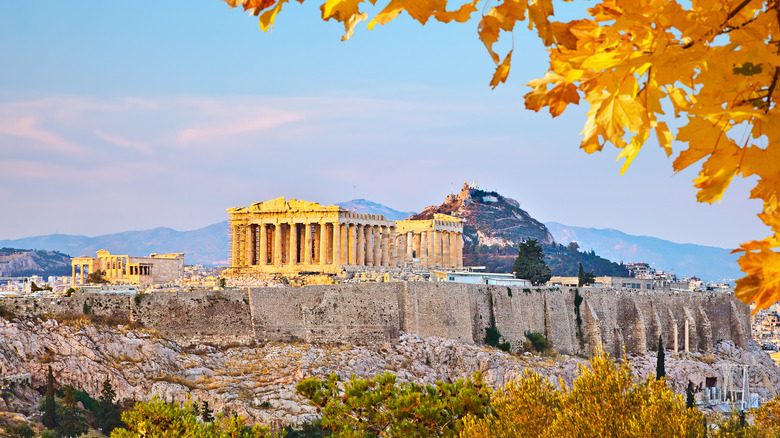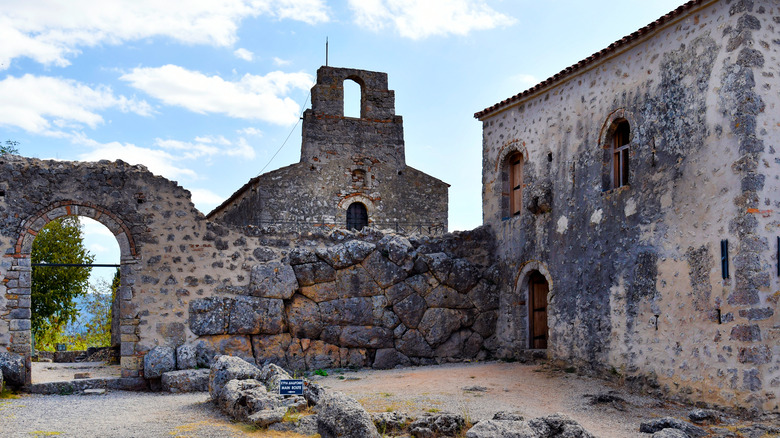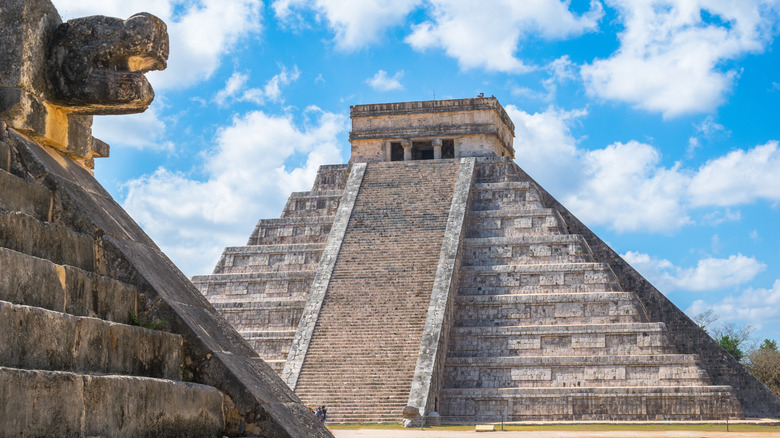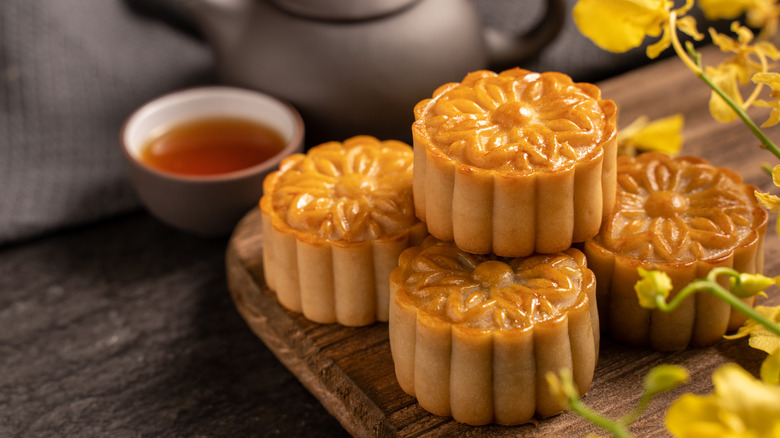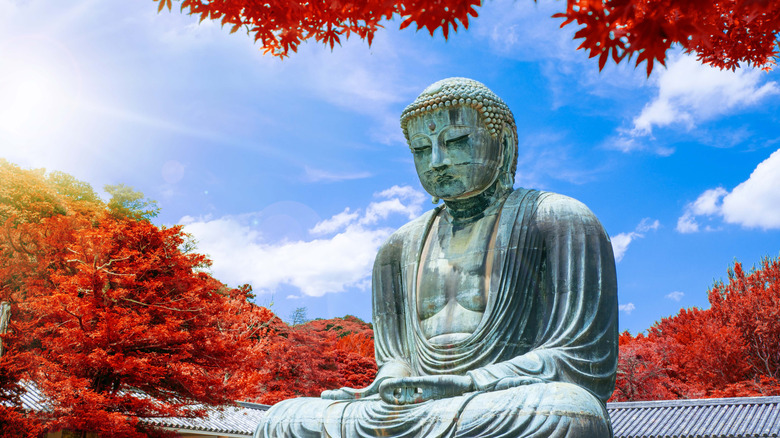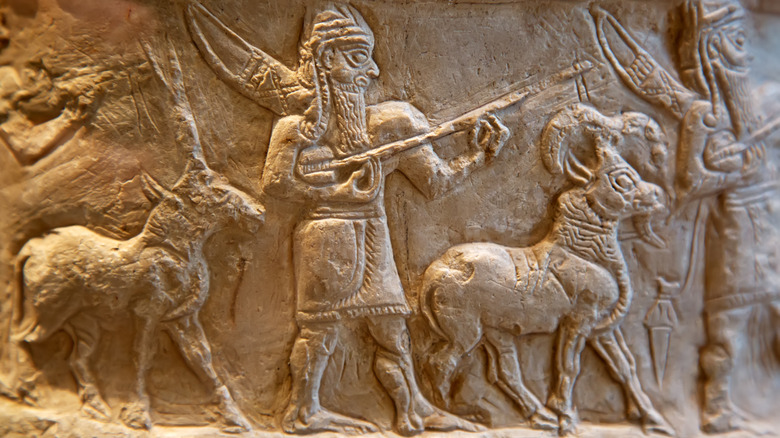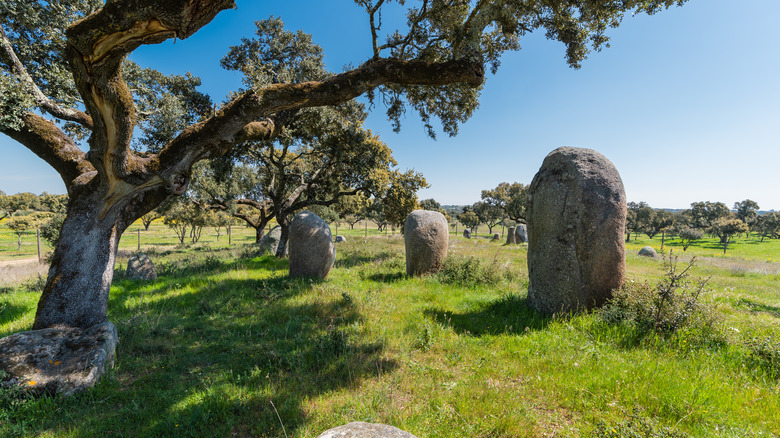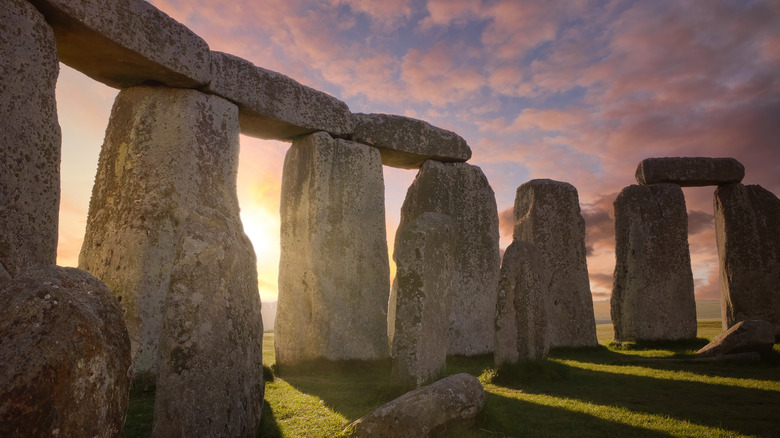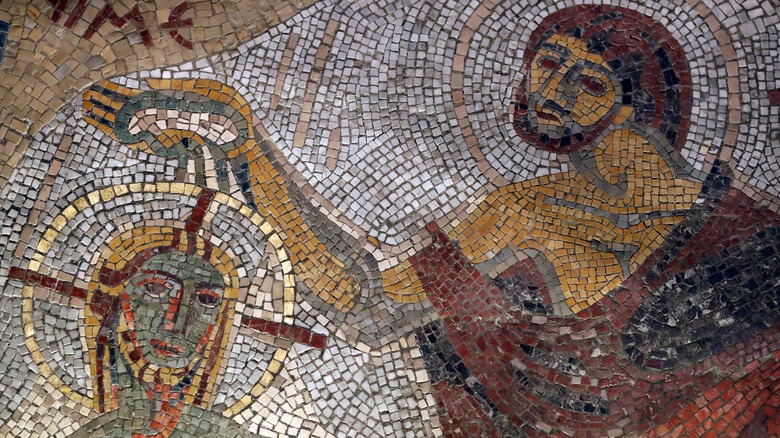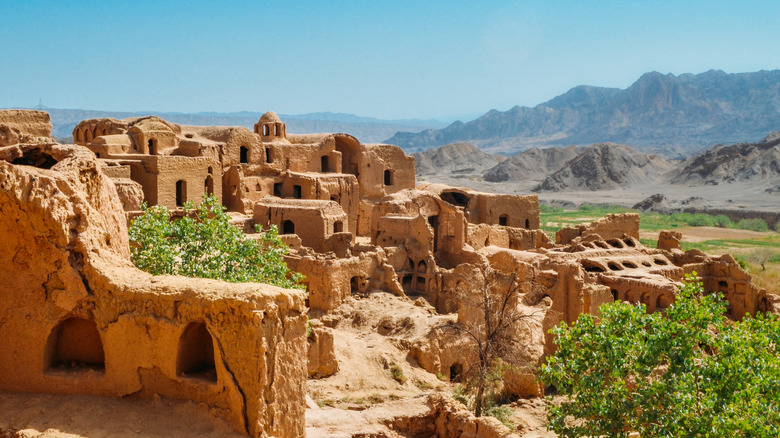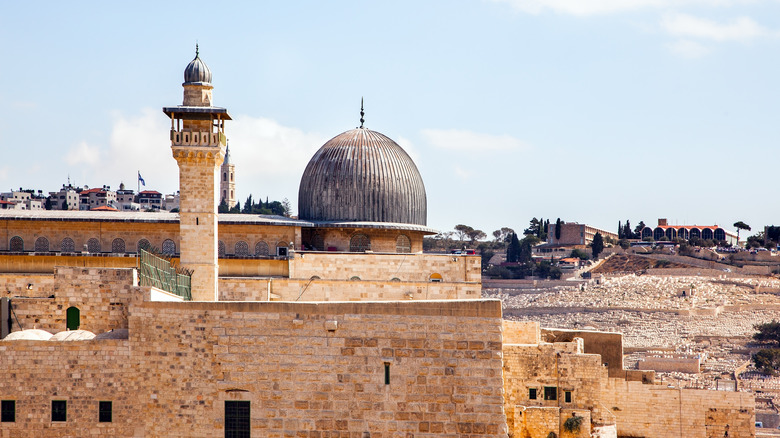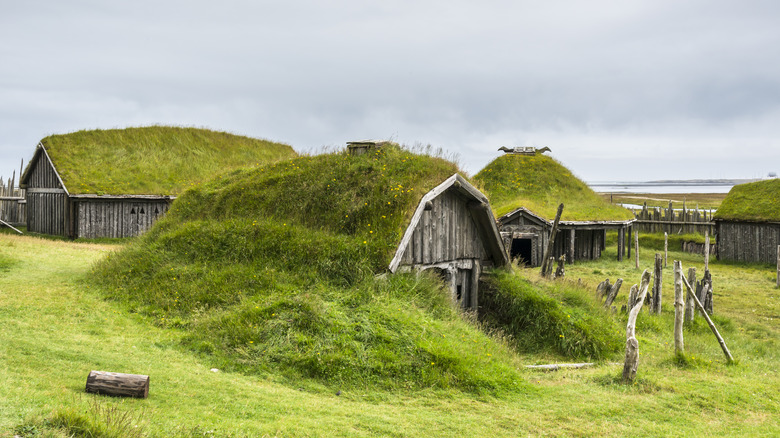How The Ancients Celebrated The Fall Equinox
Modern people love modern holidays — Christmas, Hanukkah, Kwanzaa, Valentine's Day, the Fourth of July — any excuse to eat and drink until you collapse onto the sofa into a jiggly pile of human flesh and undigested mega-calories.
Modern holidays tend to mark important dates in history that are specific to individual cultures and religions — the Fourth of July, for example, doesn't mean much if you don't live in the U S of A. The holidays of the past, though, were celebrated across cultures in parts of the world that never even heard of each other, because rather than marking events they marked things that everyone could see, like the lengthening and shortening of the days, the changing of the weather, and that twice-a-year phenomenon when day and night are equal.
Western cultures don't tend to think too much about the equinoxes, because unless you're a farmer the passage of the seasons mostly just means breaking out a different wardrobe and finding something new to complain about ("It's too hot!" "It's too cold!"). But in the distant past, the equinox was something to mark and celebrate, because it meant winter's end or the approach of the harvest. Here's how cultures around the world celebrated the fall equinox back in a time before barbecues and deep-fried whole turkeys.
The Greeks and Romans
When they weren't running around the world conquering everyone, the Romans were worshipping like 6 million different gods that they basically just stole from the Greeks (via History 101) because they couldn't be bothered to come up with gods of their own. Anyway, the Greek and Roman story of the fall equinox was tied to a deity called Persephone (Proserpina in Rome), who vanished into the underworld on the autumn equinox to be reunited with Hades, the dude who abducted her and forced her into marriage. During those months that Persephone was in the underworld being not-free to make her own choices, her mother Demeter refused to let plants grow, hence winter.
The Greeks celebrated the story of Persephone and Demeter during the Eleusinian Mysteries, a festival that was later adopted by the Romans, though it's not clear exactly how that happened since it was one of those "What happens in the Eleusinian Mysteries stays in the Eleusinian Mysteries" sorts of events, and talking about it was a capital offense.
Anyway, the Eleusinian Mysteries might have been a ritual or maybe just a giant party — no one's really sure. According to the Eleusinian Mysteries (via World History Encyclopedia), though, attendees were forever blessed with a kind of enlightenment that made them lose their fear of death, which was nice for them but doesn't explain why at least a few of them weren't inspired to discuss the goings-on, since they evidently no longer cared if they lived or died.
The Mayans
Meanwhile, the Mayans had their own way of marking the autumnal equinox. As the sun set on the Mayan temple complex El Castillo on Mexico's Yucatan peninsula, shadows created a snake-like shape that looked like it was slithering down the steps. You can observe this in person today if you're lucky enough to be in Chichén Itzá on the autumn equinox and can see over the heads of like a million other tourists.
According to Oxford University Press, no one is really sure if the snake thing was deliberate or not, mostly because archaeologists hate to talk in certainties. Since the temple also features a bunch of snake motifs and this only happens on the fall and spring equinox, though, it's probably a safe bet that some clever Mayan architect figured out how to make it happen and never got credit for it. If so, then the spectacle probably represents the serpent god Kukulcán descending into the earth to fertilize it before the harvest (via Xichen, a company that hosts Chichén Itzá tours).
The Mayans may have also hosted a ballgame on the fall equinox (via Vernon L. Scarborough and David R. Wilcox's "The Mesoamerican Ballgame"), which sounds fun, except it's believed to have ended with the sacrifice of one member of the losing team, deemed necessary in order to ensure that sun and moon would continue to move according to the seasons.
The Chinese
The Chinese still celebrate Zhongqiu Jie, the mid-autumn festival also known as the Moon Festival. This has been a thing at least since the Zhou Dynasty (1000 B.C. or so), when people would burn incense and leave food offerings, especially moon cakes and watermelon. By the 14th century, the festival had evolved to include sky lanterns and a fire dragon performance, and today it's one of China's major festivals (via the State Council of the People's Republic of China).
According to the archivists at Gale International, in antiquity, Zhongqiu Jie was probably a simple harvest festival, but at some point it became connected to the story of Chang'e, a woman who drank an elixir of life, became immortal, and moved to the moon. Today, people eat moon cakes in honor of Chang'e, who is believed to give blessings of good fortune as long as she gets some decent food offerings (via ThoughtCo). Another legend says that the Mongolian rule of China (around 1200 to 1300 A.D.) ended when rebels put marching orders into Moon Festival mooncakes, thus compelling everyone at the party to attack and overthrow the occupiers.
Zhongqiu Jie is celebrated in China and Vietnam on the 15th day of the 8th month of the Chinese lunar calendar, which coincides with the full moon. According to Britannica, the Koreans have their own version of the moon festival called Chuseok, when people travel to their ancestral homes to eat sweets, play games, and honor their ancestors.
The Japanese
In Japan, Autumnal Equinox Day (Shubun no Hi in Japanese) is a public holiday. According to the Japanese language academy Coto Academy, Japan's modern-day autumn equinox celebration has roots in Shuki Koreisai, a holiday that was probably based on Shintoism and Buddhist traditions. Modern Shubun no Hi is a secular holiday, but centuries ago it had deep, religious meaning, and people marked the day by paying tribute to the spirits of the dead (mostly family members, though evidently the ghosts of Japanese emperors also liked to crash Shuki Koreisai parties).
Around the time of the autumnal equinox, Buddhists also celebrate "Ohigan," which literally translates as "the other shore" (a reference to the path to enlightenment). The holiday is thought to date all the way back to 600 A.D. or so and Prince Shotoku, Japan's first great patron of Buddhism. Like many other autumn holidays (including Halloween, or at least All Hallows Eve in its original incarnation), Ohigan celebrates the cycle of death and rebirth and is a time when it's possible to talk to deceased friends, relatives, and ancestors. Today, Japanese believers celebrate Ohigan by visiting the graves of lost loved ones, giving them a good deep-clean, and decorating them with offerings of food and flowers (via the Buddhist Magazine Tricycle). For the deeply religious, the holiday also reflects on the teachings of the Chinese monk Shan Tao and Buddha's promise to release us humans from the cycle of birth and death.
The Mesopotamians
In many ancient cultures, the equinox was associated with agriculture, since it marked times of planting and times of harvest. The Assyrians, for example, divided the year into two halves: the summer season began on the spring equinox with the cutting of barley, and the winter season began on the autumnal equinox with the sowing of barley (via the Assyrian American Association). Today, people of Assyrian ancestry celebrate the spring equinox as the beginning of the new year, but go backward in time to the Sumerians and there was also a second new year.
According to S. Langdon's 1933 book titled "Babylonian Menologies and the Semitic Calendars," the original Hebrew custom was to begin the new year in the autumn, after the "feast of ingathering of the last fruits." When the Babylonians tried to reform the calendar, the Hebrew people were like "no," so the reformers basically gave their stamp of approval to an autumnal New Year's festival that eventually took the name Akiti (or Akitu, depending on which source you're consulting). Like so many other autumn festivals around the world, the autumnal Akiti was associated with the souls of the dead, and evidently also involved a lot of sheep and goats. According to Mark E. Cohen's book "The Cultic Calendars of the Ancient Near East," the autumn festival lasted for 11 days and was important because it marked the end of the dry season, when the moon defeated the sun and the nights finally grew longer.
The Iberians
Much though archaeologists would love to time travel back to the small corners of history and leave an iPhone in a bush somewhere set to permanently record the goings-on of ancient cultures (relax, when there's time travel, there will definitely also be batteries that never lose charge), for now they have to make guesses about what people might have done with various buildings and objects. On the Iberian Peninsula, for example, archaeologists recently identified a number of equinoctial markers, which are structures that are illuminated by the rising or setting sun on or close to the equinox, much like the snake shadow at Chichén Itzá (via Mediterranean Archaeology and Archaeometry). This suggests the Iberians — who lived in the Mediterranean from the 6th century B.C. up until the year 1 or so — were celebrating or at least marking seasonal changes.
It's hard to know for sure how the Iberians might have celebrated the fall equinox, but archaeologists have also discovered a large number of lucernes (lamps) at a site very close to a major equinoctial marker, which suggests that people might have been hanging around there before dawn in order to witness the arrival of the new season. There's also evidence of burned ritual offerings, mostly unripe acorns, which would have had to have been collected in early autumn. This suggests that the equinoctial markers attracted pilgrims, who brought offerings and possibly participated in a large public ritual before or during the spectacle of the season's first sunrise.
The Celts
Unless you have been living under one of Stonehenge's giant, mysterious rocks, you know that Stonehenge's giant, mysterious rocks are the components of a huge, impractical calendar (imagine whipping out your Stonehenge every time you have to note the date of your next team meeting).
Stonehenge marks the winter solstice sunrise and the midsummer sunset, and it likely dates all the way back to 2500 B.C., so archaeologists doubt it had anything to do with the equinoxes given that the people of that time were probably not sophisticated enough to understand the significance of those events (via English Heritage). And despite the popular theory that the Celts were the architects of Stonehenge, they were not — they didn't move into the area until 1,000 years after Stonehenge was built (via History).
It's not entirely clear how the Celts actually did celebrate the change of the seasons. Today, modern pagans celebrate "Mabon," but though the name comes from an ancient Welsh god, it wasn't adopted by pagans until the 1970s (via Boston Public Library). This makes perfect sense when you consider that there is no mention of equinox (or solstice) festivals in the early Irish texts, which were used by academics in the 19th century attempting to reconstruct a "pan-Celtic" calendar for the British Isles. So sorry to disappoint, but this means it's possible the Celts of the British Isles may have celebrated the fall equinox by not celebrating the fall equinox at all (via "The Celtic Calendar and the Anglo-Saxon Year").
Early Christians
The two best-known modern Christian holidays are Christmas and Easter, which are said to mark the birth and resurrection of Christ (respectively), though most people just use these holidays as an excuse to eat chocolate and spend a bunch of money they don't have. It hasn't always been like this, though, and not just in the sense that Christmas and Easter haven't always been bizarrely bastardized versions of their former splendid selves.
In fact, according to a 2018 paper published by World Archaeology, the early Christian calendar included both the solstices and equinoxes, and Bede the Venerable even wrote about how they were connected to the life of Jesus, noting that John the Baptist was conceived on the autumnal equinox. In fact, the Holy Orthodox Church still celebrates this slightly creepy holiday (also known as When John the Baptist's Parents Got Busy Day) as a day of miracle, since John's mom was actually thought to be way too old to have children (via Antiochian Orthodox Christian Archdiocese).
The autumnal equinox was considered a feast day, per OCN, which was basically, you know, an excuse to eat too much chocolate. Just kidding (at the time, chocolate was exclusively a Mesoamerican thing, according to History), but the early Christians did tend to celebrate their holidays with food, as evidenced by Isaiah 25:6, in which believers are promised "a feast of fat things, a feast of choice wines — of fat things full of marrow, of choice wines well refined" (via Catholic Historian Emily Stimpson Chapman).
Pre-Islamic Iran
Let's be real, the Gregorian calendar is stupid and doesn't make sense. Sure, it's a solar calendar, meaning it lasts 365 days (give or take the occasional leap year), the time it takes to loop the sun, so it does a good job of making sure the weather is more or less predictable from one month to the next. But it also starts on an arbitrary day that someone evidently pulled out of some ancient butt or another (that said, William Smith's "A Classical Dictionary of Greek and Roman Biography, Mythology and Geography" says January was picked because the god Janus was in charge of new beginnings).
Before the Gregorian calendar, the new year was often connected to the changing of the seasons. This was true for the people of pre-Islamic Iran, who celebrated the new year on Mehregan, an autumnal equinox festival. Evidently, Mehregan was a time to let go of your inhibitions — according to the Iranian-American newspaper Iranian.com, the local monarchs would put on sun-shaped crowns and purple costumes and embarrass themselves in public by dancing and drinking too much, sort of like college students on spring break. The public festival featured music and other performances, and at home, families decorated their tables with dry marjoram and set it with sweets, flowers, fruits, and vegetables. Pomegranates, apples, almonds, and pistachios were especially symbolic of the season. The celebration also included prayer and the practice of rubbing toxic antimony around the eyes, so don't go thinking Mehregan was all fun and games or anything.
The early Jews
Before Christians came along, Judaism was closely tied to the turning of the Earth. Early Jews marked the passage of time with Tekufat Tebet (the winter solstice), Tekufat Nisan (the spring equinox), Tekufat Tammuz (the summer solstice), and Tekufat Tishri (the autumn equinox). All four Tekufah were associated with the superstition of dumping out any water kept inside the home, lest it became spoiled by some sort of mystical blood or another. On the fall equinox, this was specifically blood from the knife that Abraham used to kill Isaac. Drinking thusly spoiled water was said to cause bloating and possibly death (via the Jewish Encyclopedia).
Apart from dumping out the water, the early Jews didn't mark the autumn equinox with a specific celebration, though the holy day of Rosh Hashanah does happen around the time of the fall equinox (it's celebrated on a different day each year since it's based on the lunar and solar cycles, per the Independent). Rosh Hashanah was first mentioned in 200 A.D., though History says it probably dates back to well before the sixth century B.C.
Unlike the secular American new year, Rosh Hashanah is a solemn occasion that still includes many traditions from antiquity. According to the Jewish history website Chabad.org, the custom of Tashlich is ancient — it's basically a prayer for forgiveness that takes place on the banks of a river and ends with a symbolic "shaking of the corners" of whatever it is you're wearing.
Vikings
If you were a fan of the History channel's bloody and semi-factual television series "Vikings," you probably think the Norse traditions involved weird eyeless dudes and ritualistic torture, and frankly, you're at least sort of correct. It's kind of hard to identify actual truths in the probably fictionalized sagas — the Vikings did brag about a torture ritual called "blood eagle" in their poetry, which historians used to think was a myth until a 2022 University of Chicago study deemed it possible, though "anatomically challenging." Still, the Sagas weren't written down until sometime around the 13th century, so they did have time to gain some embellishment.
Anyway, one well-known Viking tradition was the blót, which was a ritualistic sacrifice that took place at each of the four points of the year: the winter and summer solstice, and the spring and fall equinox. According to the National Museum of Denmark, the blót was a bloody spectacle that typically involved some kind of sacrifice (often a horse). The blood of the unfortunate animal was drained into a bowl and then splattered all over the altar (and also the walls and everyone in attendance) with a twig. The poor horse was then cooked and eaten while everyone toasted Odin and promised to kill a lot of enemies in battle.
The National Museum of Denmark also notes that the blót sacrifices may have included human sacrifice, though this might not have been as common as "Vikings" led us all to believe.
